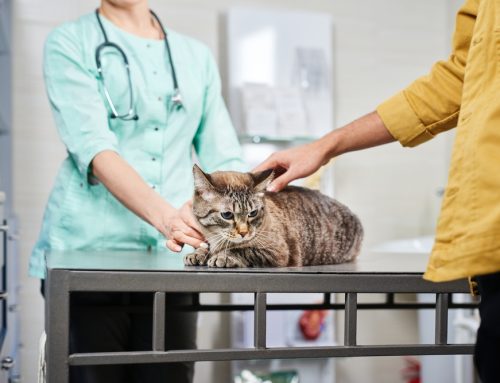You want the best of everything for your pet—the best food, the best toys, the best grooming—and, of course, the best veterinary care. Ensure your pet gets the care they need in the event of an unexpected illness or injury with a pet insurance plan. Our team at Twin Maples Veterinary Hospital knows every pet deserves the best, and we have some tips to help you choose the best insurance plan for you and your pet.
#1: Insure your pet early
The best time to buy pet insurance is when your pet is young. Younger pets are generally healthier and will have lower rates than older pets who are more prone to ailments.
Most pet insurance companies cover pets as young as 8 weeks old, but may rule senior pets ineligible for first-time enrollment or restrict them to certain coverage plans. However, older pets with a pre-existing condition—which traditional pet insurance policies do not cover—still can be covered by insurance for non-related injuries and future illnesses.
#2: Consider your pet’s health history
If your pet has a current health problem, most pet insurance companies will consider this a pre-existing condition and will not cover veterinary expenses related to it. Pre-existing conditions may include:
- Chronic conditions — These are conditions that can recur during your pet’s life, including breed-specific issues (e.g., allergies, other breathing problems).
- Bilateral conditions— A bilateral condition can happen on both sides of the body, such as hip and elbow dysplasia, cruciate ligament issues, cataracts, and luxating patellas.
- Intervertebral disc conditions — Intervertebral disc conditions affect the spinal cord, and can be caused by degeneration or trauma.
While most insurance plans will not cover chronic pre-existing conditions, they may cover some curable conditions after the pet has been symptom-free for a specific period.
#3: Compare pet insurance plans
Every insurance company’s policies will be slightly different, but most offer the following coverage options:
- Accident-only coverage — This plan type covers accidental injuries (e.g., broken bones, foreign-object ingestion) and other medical conditions. It does not cover medications, vaccinations, or routine examinations, and generally has the lowest monthly premium.
- Illness and accident coverage — This plan usually covers the costs of diagnosis and treatment for conditions such as cancer, endocrine disorders, and some orthopedic injuries. Because this plan is more comprehensive, it has a higher premium.
- Wellness coverage — Many pet insurance companies offer wellness riders that you can add to most accident and illness plans. These riders may cover preventive services, such as:
- Annual wellness exams
- Vaccinations
- Routine blood work
- Spay and neuter procedures
- Dental cleanings
- Flea, tick, and heartworm prevention and testing
#4: Read the pet insurance fine print

Do not choose a pet insurance plan or company based solely on price. Instead, carefully research the coverage to ensure you choose the right fit for you and your pet. Other factors to consider when comparing insurance plans include:
- Reimbursement — Some pet insurance companies make full or partial payments directly to the veterinarian, so you do not have to pay out of pocket or file a claim. Others require policyholders to pay their provider in full and file a reimbursement claim online or through an app. Most pet insurance companies process a claim in 10 working days.
- Waiting periods— Most pet insurance plans have a 14-day waiting period before you can file a claim. Some plans have shorter waiting periods for accident coverage than for illness coverage. Insurance companies consider health conditions that arise during the policy waiting period as pre-existing conditions, and will not cover these illnesses.
- Deductibles — A deductible is the non-reimbursable amount you must pay toward your pet’s veterinary costs before the insurance policy starts to cover these fees. The higher your deductible, the lower your premiums. Some companies offer adjustable monthly premiums and deductible levels when you first sign up, and the overall cost will vary by company.
- Maximum annual coverage — Some pet insurance companies limit how much they will pay out every year. In these cases, you typically can choose your coverage cap, which usually ranges from $5,000 to unlimited. Choosing a higher coverage cap will increase your monthly premiums.
- Discounts — Most pet insurance companies offer discounts for multi-pet coverage. Check whether you are eligible for any discounts from the company you choose.
Researching and understanding your pet insurance options takes time, but these tips can help you choose the right plan for your pet’s needs and your budget. Contact our Twin Maples Veterinary Hospital team with any pet insurance-related questions, or to schedule an appointment.









Leave A Comment